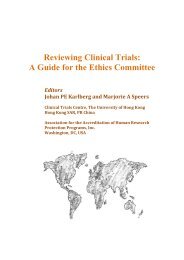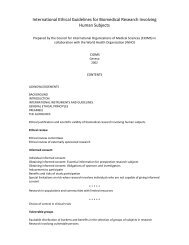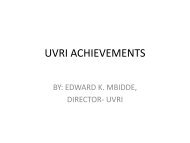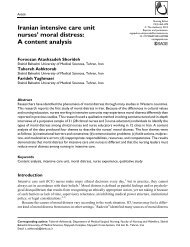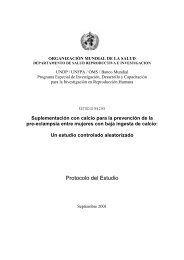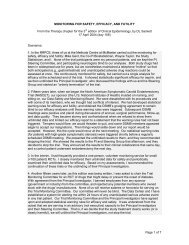Toxicity Grading Scale for Healthy Adult and Adolescent Volunteers ...
Toxicity Grading Scale for Healthy Adult and Adolescent Volunteers ...
Toxicity Grading Scale for Healthy Adult and Adolescent Volunteers ...
Create successful ePaper yourself
Turn your PDF publications into a flip-book with our unique Google optimized e-Paper software.
Contains Nonbinding Recommendations<br />
FDA’s guidance documents, including this guidance, do not establish legally en<strong>for</strong>ceable<br />
responsibilities. Instead, guidances describe FDA’s current thinking on a topic <strong>and</strong> should be<br />
viewed only as recommendations, unless specific regulatory or statutory requirements are cited.<br />
The use of the word should in FDA’s guidances means that something is suggested or<br />
recommended, but not required.<br />
II.<br />
BACKGROUND<br />
St<strong>and</strong>ardized toxicity assessment scales have been widely used to evaluate products treating<br />
specific diseases. For example, the National Cancer Institute’s Common <strong>Toxicity</strong> Criteria <strong>Scale</strong><br />
<strong>and</strong> the Division of AIDS’ <strong>Toxicity</strong> <strong>Grading</strong> <strong>Scale</strong> st<strong>and</strong>ardize the evaluation of adverse events<br />
among patients with cancer <strong>and</strong> HIV/AIDS, respectively (Refs. 1, 2). The defined toxicity<br />
parameters in those scales are designed <strong>for</strong> patients who may already experience mild, moderate,<br />
or severe adverse clinical or laboratory events due to the disease process, <strong>and</strong> may not be<br />
appropriate <strong>for</strong> healthy volunteers.<br />
In the development of the toxicity grading scales <strong>for</strong> healthy volunteers, we chose parameter<br />
limit values based on published in<strong>for</strong>mation, when such values were available (Refs. 1-6). For<br />
example, the Brighton Collaboration has developed case definitions <strong>and</strong> guidelines to evaluate<br />
some adverse events associated with administering vaccines (Ref. 3). In some cases, parameter<br />
limit values were based on clinical experience <strong>and</strong> experience reviewing vaccine clinical trials<br />
that enroll normal healthy subjects.<br />
<strong>Toxicity</strong> grading scales <strong>for</strong> laboratory abnormalities should consider the local laboratory<br />
reference values when the parameter limit values are defined. The characterization of laboratory<br />
parameters among some populations of healthy adults <strong>and</strong> adolescents may require the exercise<br />
of clinical judgment, <strong>for</strong> example, consideration of the potential <strong>for</strong> ethnic differences in white<br />
blood cell (WBC) counts or gender differences in creatine phosphokinase (CPK) values.<br />
III.<br />
TOXICITY GRADING SCALE TABLES<br />
Adverse events in a clinical trial of an investigational vaccine must be recorded <strong>and</strong> monitored<br />
<strong>and</strong>, when appropriate, reported to FDA <strong>and</strong> others involved in an investigation (sponsors, IRBs,<br />
<strong>and</strong> investigators). (See, <strong>for</strong> example, 21 CFR 312.32, 312.33, 312.50, 312.55, 312.56, 312.60,<br />
312.62, 312.64, 312.66). Although the use of a toxicity grading scale <strong>for</strong> adverse events would<br />
not replace these regulatory requirements, using a scale to categorize adverse events observed<br />
during a clinical trial may assist you in monitoring safety <strong>and</strong> making required reports.<br />
Nonetheless, we believe that categorization or grading of data as outlined in this document is<br />
supplementary to <strong>and</strong> should not replace full <strong>and</strong> complete data analysis.<br />
These guidelines <strong>for</strong> toxicity grading scales are primarily intended <strong>for</strong> healthy adult <strong>and</strong><br />
adolescent volunteers. The parameters in the tables below are not necessarily applicable to every<br />
clinical trial of healthy volunteers. The parameters monitored should be appropriate <strong>for</strong> the<br />
specific study vaccine. For some preventive vaccines under development, it may be appropriate<br />
2




